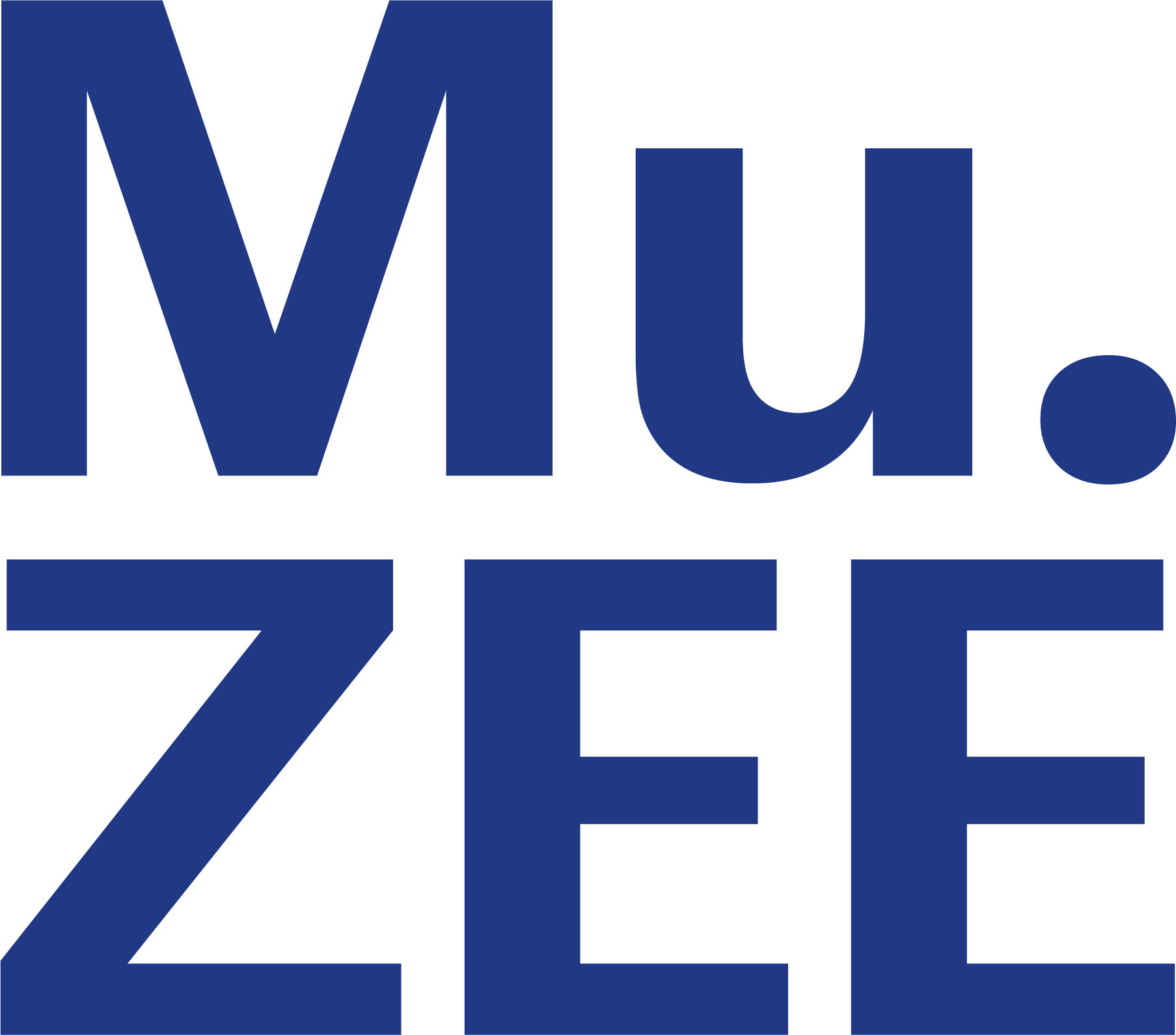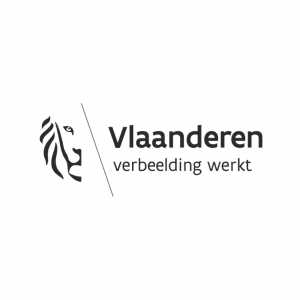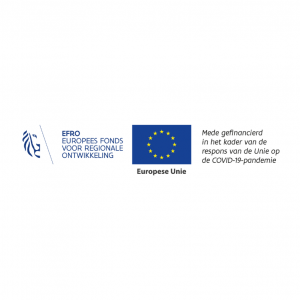RESEARCH
Library
Mu.ZEE Library Services During Renovation Works
The library will also move to a new floor during the renovation works at Romestraat. This means the library will be temporarily closed while we prepare for the move. The relocation of the library collection is scheduled for March. Until then, you can still contact us for information about Art in Belgium.
Would you like to consult publications or archive materials? Please make an appointment at least one week in advance via bib@muzee.be or +32 59 56 45 93. Wherever possible, we aim to provide digital services.
Thank you for your understanding and patience during this transition period.
Are you looking for information about a work that you saw during your visit to Mu.ZEE? Would you like some more background information about an exhibition? Or are you simply interested in art and art publications? On the third and top floor of the museum, with a view over the roofs of Ostend, you can visit the Mu.ZEE library reading room and browse 75 current art magazines from home and abroad, new acquisitions and our own publications.
Mu.ZEE library is primarily an academic library where the collection is in line with the activity of Mu.ZEE. Information about Belgian and international art from the 19th, 20th and 21st century is to be found there.
The library collection comprises more than 1,000 magazine titles and 30,000 book titles including artists’ monographs, specialist literature, reference works and exhibition catalogues. Extensive documentation about artists in the form of artist folders completes the collection. In addition, Mu.ZEE library also has special collections which are so valuable that they are kept as separate parts of the collection: Constant Permeke fund, Wout Hoeboer fund, Etienne Elias fund, Robert L. Delevoy archive and a collection of artist publications.
The collection has not yet been made available online, but we are working hard on that.
Search further in our Museum Library catalogue via this link
Practical info
Opening hours
Mu.ZEE Library Services During Renovation Works
The library will also move to a new floor during the renovation works at Romestraat. This means the library will be temporarily closed while we prepare for the move. The relocation of the library collection is scheduled for March. Until then, you can still contact us for information about Art in Belgium.
Would you like to consult publications or archive materials? Please make an appointment at least one week in advance via bib@muzee.be or +32 59 56 45 93. Wherever possible, we aim to provide digital services.
Thank you for your understanding and patience during this transition period.
Facilities
Reading room for 15 people
Free Wi-Fi
Printing, copying or scanning possible
Access
Mu.ZEE library serves both internal employees and the wider public, such as museum visitors, artists, guides, students, teachers, scientific researchers, etc.
During library opening hours, current journals and publications in the reading room are available for anyone to consult. Publication from the library repositories and from the special collections must be requested. No works are loaned.
The reading room is wheelchair accessible.
Valuation trajectory
Mu.ZEE appreciates
Mu.ZEE appreciates its collection with the support of the Flemish Government and a wide range of cultural partners. The application and methodology of the valuation process is based on the one hand on the keys provided by the Flemish Heritage Institutes, on the other hand specially adapted to the needs of our policy and our collection.
The valuation is applied with an internal core team, sounding board groups and multiple stakeholders. For this we engage the wide network of Mu.ZEE and its partners, as well as the call below.
The theoretical framework of our valuation process is determined by our current mission and vision, i.e. our social function as a museum of modern and contemporary art in Belgium. We want to interpret our collection as broadly as possible within a transhistoric and transcultural policy. The needs of our audience and contemporary issues from society will be made readable by means of a collection analysis after the valuation.
What is valuation?
Appreciating an art collection means appreciating the works of art. There are different forms and definitions of value, which can be very different per institution. In some collections, certain pieces may have a higher value than other pieces, because for example a comparison is made in the condition, the use value or the financial value.
Mu.ZEE does not want to compare, but to view and discover side by side. In a visual arts collection it is not possible or not obvious to use a traditional value scale. After all, you cannot put a score on the meaning of an artwork or the individual aesthetic experience. That is why we have drawn up a number of adjusted criteria based on existing scales and our current policy. Our criteria will test the presence or absence of certain types of value. Based on various yes-no questions, we indicate the qualities of a sub-collection or a work of art and we look for different manifestations of art-historical, social-social and research or use value. We look at the image itself, but also at the social, historical, social and biographical context in which a work or an ensemble was created.
Thanks to our appreciation, we reveal the interests, needs, and concerns that surround our artworks. This determines the decisions we make as a museum. With the knowledge from the valuation process, we can collect, store, research and disclose better.
Appreciate for the future
The appraisal process will provide an overview of our art collection and its potential. It will reveal certain positive policy points, gaps and mistakes. This gives us a better definition of our collection, the long-term loans and the needs of this responsibility. Step by step we increase the knowledge about our artworks for future research and use. We complement the collection according to the flaws, and try to arrive at new interpretations that can present interesting and relevant narratives to our spectators through exhibitions and events. Finally, the valuation will also be a major step forward towards digitization and online knowledge access.
We value and define today's snapshot for quality in tomorrow's museum. Mu.ZEE also strives through this project to improve its responsibility as a public meeting place for art and culture.
Is M. Flemish Government, VKC, KMSKA, FARO, CAHF, Heritage in Sight.
Ensor researchproject
In 2013, the Royal Museum of Fine Arts Antwerp began the ‘Ensor Research Project’. The aim of the project, which is ongoing, is to conduct both art-historical and material-technical research into James Ensor’s artworks. The Royal Museum of Fine Arts Antwerp owns an extensive collection. But the artist James Ensor is also well represented at Mu.ZEE, which is therefore a partner in the fascinating project. Art-historical research involving (un)published sources and archives, whether or not concerning Ensor, goes hand in hand with the latest techniques in the field of photographic images using X-rays and infrared light or a portable X-Ray Fluorescence Spectrometer.
The research findings are disseminated via various channels. Among others, the website jamesensor.vlaamsekunstcollectie.be, shares findings but results of the research are also published on the blog of the Royal Museum of Fine Arts Antwerp https://kmskablog.wordpress.com/tag/ensor-research-project/.
Ensor|Spilliaert|Permeke unlocked
Mu.ZEE makes the works of three great masters and their contemporaries digitally accessible
In the Mu.ZEE museum collection, the three great masters, James Ensor, Léon Spilliaert and Constant Permeke, are well represented. Thanks to a ‘digital collection registration catch-up movement’ project grant from the Flemish Government, Mu.ZEE was able to conduct in-depth research, register and make digitally available the artistic works of these three ‘Ostend residents’ for one year via our museum website.
Ostend and James Ensor are inextricably linked. He loved his Ostend: the city was his muse and source of inspiration. Léon Spilliaert, more than twenty years younger than Ensor, has also associated his name with the Queen of Seaside Resorts. His nocturnal wanderings through the city and long walks along the beach led him to create his best works. Constant Permeke, although born in Antwerp, but brought up in Ostend, was equally attracted to the North Sea and everyday life in and around this city. Bringing together the research data provides an insight into the artistic centres of the twentieth century, in Ostend but also far beyond. In addition to art-historical research into the artworks, we also form an impression of the artists’ networks, their relationships with each other and their contemporaries, through the archives available.
In concrete terms, this means that in the project we enhance the existing collection with metadata, with high-quality reproductions of the artworks and that we make all this available on this website. During registration, we supplement basic data, but we also capture existing knowledge in keywords (iconographic and associative), so that the basic registration is extended, supplemented or enhanced. The in-depth registration, as we call it, makes the artworks easier to find in collection databases. We make the qualitative metadata available as open data, which means that research, registration and digitisation are published on various platforms. In the first instance, the museum website, but also the umbrella website of the Flemish Art Collection. Moreover, the works of James Ensor and Léon Spilliaert are already in the public domain. A momentum that we want to seize to also publish our research on Wikidata.
Works on paper
The works of art on paper by Mu.ZEE: secured and unlocked
Did you know that more than half of Mu. ZEE’s collection consists of works on paper?
Of these, some 45% are unique works such as drawings, collages, watercolours, gouaches, paintings...
Other techniques, such as wood cutting, lino cutting, etching, lithography, screen printing, offset, … are replicated. In the Mu.ZEE collection, there are not only regular prints but also Épreuve d’Artiste and Hors Commerce prints and coloured copies.
About half of the works on paper date from before 1970, the rest being produced after 1970.
The collection consists of the historical collections from the Museum of Fine Arts of the City of Ostend, the former collection of the PMMK that had already grown from the collection of works of art from the Province of West Flanders (now owned by the Flemish Community); and acquisitions by Mu.ZEE vzw.
Both the Museum of Fine Arts of Ostend and the PMMK had set up an exhibition hall as a print room at that time. Today, it is far less known that there are so many works on paper in the collection.
Each curator of the Museum of Fine Arts left their mark on the collection policy, and a lot of work related to the city of Ostend was collected.
Former curator Willy van den Bussche’s acquisition policy was aimed at collecting work from artists who only produced graphics or by purchasing graphic works when it was not possible to purchase work from other materials.
The “Graphics for the PMMK” folder was published on the occasion of the opening of the PMMK in 1986 and was compiled with the support of artists who made a work available to finance the further development of the collection.
In the past, we often saw that the main focus was on individual works. The fact that they were part of a graphics folder was sometimes not registered which meant the contents of the folders became dispersed.
Through the subsidised catch-up operation for collection registration following the works of Ensor, Spilliaert and Permeke, the paper collection has now been mapped. For this purpose, the registration of more than 4,300 works was reviewed and completed. Each work was marked with a photo and stored safely. Just over 730 works have also been professionally photographed for access on the website, where works on paper could already be found. For example, you can continuously view works that, because of their sensitivity to light, can only be on display in a room for limited periods and view them in detail thanks to the high quality of the photographs.


